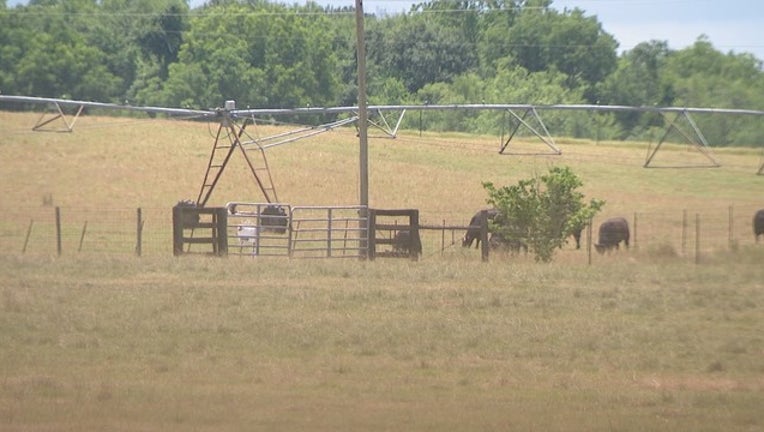South Carolina farmers say crops in danger as drought grows

COLUMBIA, S.C. (AP) - Many farmers in South Carolina say a growing drought is threatening to devastate their crops right at harvest time and officials said there are plenty of indications the dry weather will spread.
A special committee that reviews drought in the state voted Wednesday to classify 31 of South Carolina's 46 counties as suffering moderate drought - the second in four worsening stages.
The vote came after the Drought Response Committee had a long discussion on whether to advance some counties to the next stage - severe drought - based on crop damage. The panel decided to wait because lake levels, stream flow, and groundwater and reservoir levels are still normal or above normal because of several wetter than normal years.
"It's not a moderate drought for farmers, who are losing everything," South Carolina State Climatologist Hope Mizzell said.
Chris Toole said it has barely rained at his farm in Aiken and Orangeburg counties in two months. He expects to lose half his corn, cotton and peanuts, a year after heavy rains from Hurricane Florence caused another poor harvest.
Pastures of grass - one of the first harbingers of dry weather - are gone. Livestock farmers around Laurens County have been feeding hay to their animals for more than a month, cattle farmer John Irwin said.
"For agriculture, we are in a heap of trouble," Laurens County cattle farmer John Irwin said.
Parts of Georgia just south of Atlanta and Alabama just south of Birmingham are also in as bad shape as areas of South Carolina, according to the U.S. Drought Monitor .
A soybean farmer in Jackson County, Georgia, northeast of Atlanta, said his soybeans are so dry they can't recover even if it did rain. In Terrell County, Georgia, near Albany, some farmers are digging up peanuts early before all the moisture in the ground is gone, according to the U.S. Department of Agriculture .
In Talladega County, Alabama, near Birmingham, a farmer told the federal agency the heat and dry weather have made it hard on workers in the field and impossible to plant colder weather crops.
The drought is still spotty in the Southeast. Coastal South Carolina is fine, thanks to rain from Hurricane Dorian that did not make it inland. Tropical rains also have helped areas near the Gulf of Mexico.
Far northern South Carolina and other places closer to the Appalachian Mountains have been helped by fronts and summer thunderstorms that have not made it farther south.
But for dry areas, short-term forecasts are quite discouraging and long-term ones don't offer much hope of relief. No significant rain is predicted for the next two weeks and October and November are typically some of the driest months in the Southeast.
"While we never wish for a hurricane, if we get some moisture in early October, it could be useful," said Frank Alsheimer, a meteorologist with the National Weather Service office in Columbia.
If the dry weather continues, officials at water companies and other utilities said they may have to start looking at water restrictions when the weather gets warmer and things start to grow again this spring.
Part of the reason the drought committee didn't put some South Carolina counties into severe drought was so they could use that designation later to bring more attention to the problem if conditions worsen.
___
Follow Jeffrey Collins on Twitter at https://twitter.com/JSCollinsAP.

